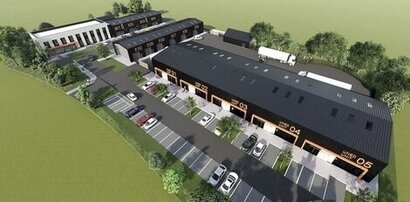
The Welsh Government, in partnership with Carmarthenshire County Council, is building 32,500 square feet of low carbon offices, light industrial units and hybrid spaces for letting across three buildings. With support from the Active Building Centre, the project will help transform the way commercial buildings are powered and heated. The new buildings will generate electricity using on-site renewables and incorporate high levels of insulation to deliver a low carbon development with reduced running costs.
The aim is to achieve ‘net zero carbon in-use standard’, which would see the development produce enough renewable energy to meet the lighting and heating needs of the buildings.
The Welsh Government is investing £5.9 million in the project, with additional funding contributions being made by Carmarthenshire County Council and the Active Building Centre. In addition, £3.25 million funding has also been awarded to the project by the European Regional Development Fund, through the Welsh Government. The main contractor for the development is Andrew Scott Limited.
The Cross Hands East Strategic Employment Site has been delivered via a joint venture between the Welsh Government and Carmarthenshire County Council, comprising a large programme of infrastructure works delivered over two phases.
“The Welsh Government is taking decisive action to tackle the climate change crisis, so that we build a better green future for our country” said Welsh Economy Minister Vaughan Gething, speaking as the COP27 UN climate summit takes place in Egypt. “We’re also working hard to deliver the supercharged green industries of the future that will help create high-quality jobs for people in their local communities. Delivering first-class business spaces is central to that vision – and it’s vital we do this in a way which contributes to our decarbonisation aspirations. This new development does exactly that, by demonstrating superb low carbon credentials. With the support of the Active Building Centre, I hope it can become a launchpad for further low carbon employment space, promote new technologies and provide essential data on the benefits low carbon buildings can deliver.”
For additional information:

